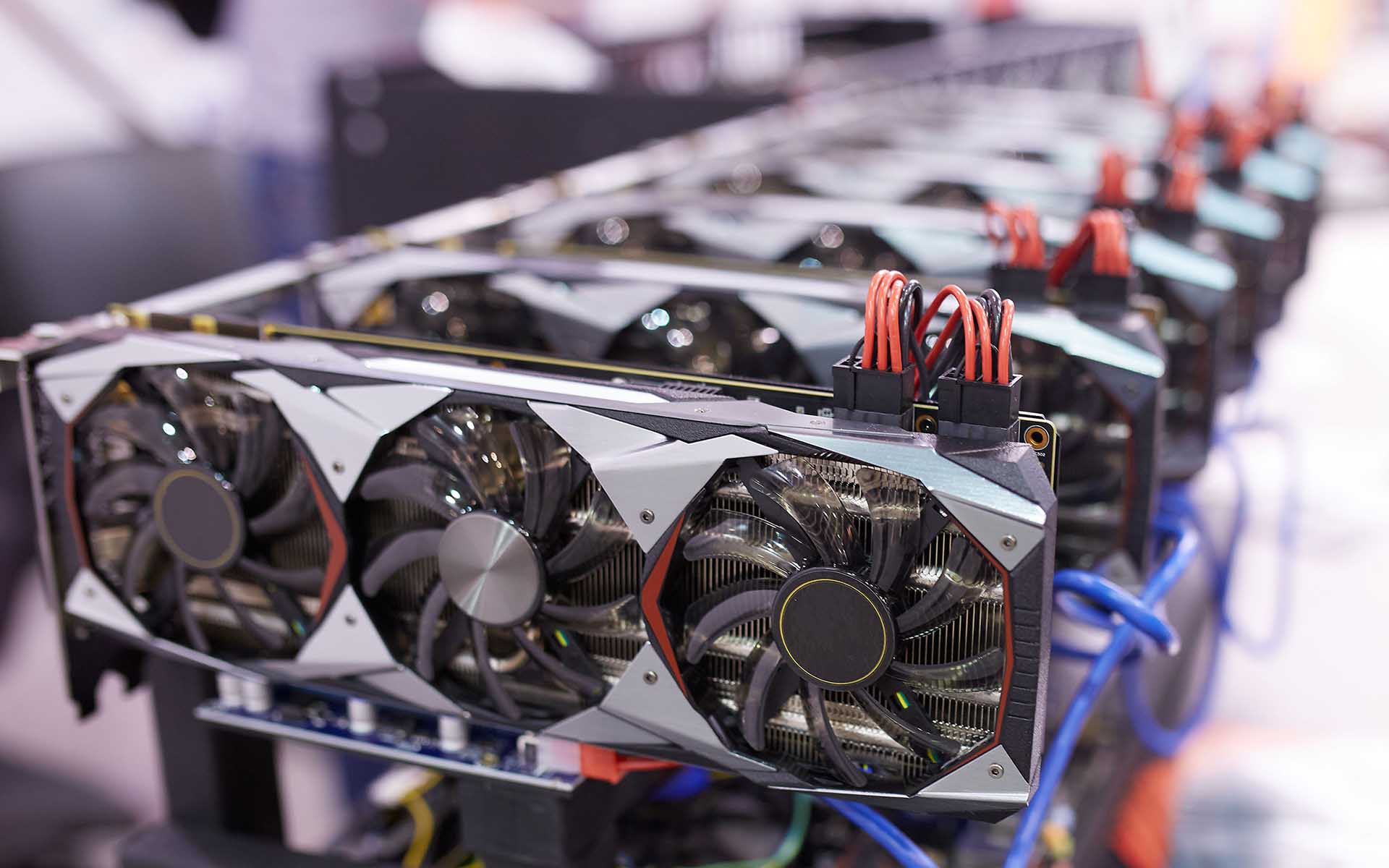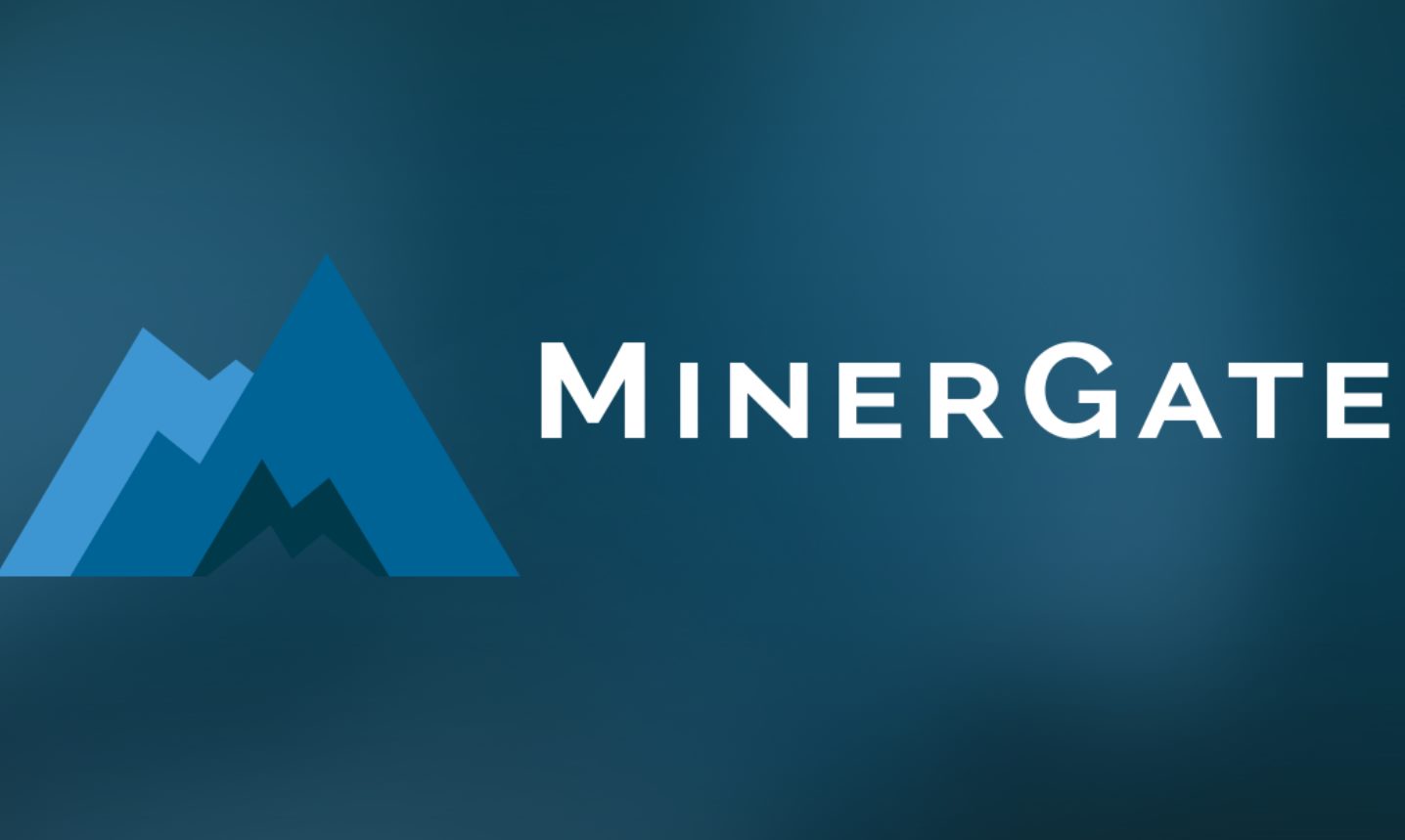Introduction
Welcome to the world of cryptocurrency mining! In recent years, cryptocurrencies like Bitcoin and Ethereum have taken the world by storm, attracting both investors and tech enthusiasts alike. But have you ever wondered how these digital currencies are created and maintained? That’s where cryptocurrency mining comes into play.
Cryptocurrency mining is the process of verifying and recording transactions on a decentralized digital ledger called a blockchain. Not only does mining secure the network and validate transactions, but it also allows miners to earn rewards in the form of newly minted cryptocurrency.
In this article, we will delve into the world of cryptocurrency mining, exploring what it is, how it works, and whether it’s worth it for aspiring miners. So grab your virtual pickaxe, put on your mining helmet, and let’s dig in!
In order to fully understand how mining for cryptocurrency works, it’s important to have a basic understanding of what cryptocurrency is and how it functions. Let’s take a closer look.
What is Cryptocurrency?
Cryptocurrency is a digital or virtual form of currency that uses cryptography for security. It is decentralized, meaning that it operates on a peer-to-peer network without the need for a central authority, such as a bank or government. One of the key features of cryptocurrency is its ability to facilitate secure and transparent transactions, making it an attractive alternative to traditional financial systems.
The most well-known cryptocurrency is Bitcoin, which was created in 2009 by an anonymous individual or group of individuals under the pseudonym Satoshi Nakamoto. Since then, numerous other cryptocurrencies, known as altcoins, have entered the market, each with its own unique features and purposes.
Cryptocurrencies are built on blockchain technology, which is a distributed ledger that records all transactions made with a particular cryptocurrency. The blockchain ensures the integrity and transparency of transactions by making them immutable and publicly visible to all participants in the network.
One of the main advantages of using cryptocurrency is the ability to eliminate the need for intermediaries, such as banks, in financial transactions. This can result in lower transaction fees and faster settlement times. Additionally, cryptocurrencies provide individuals with more control over their own funds and financial privacy.
While cryptocurrencies have gained popularity as a medium of exchange, they also serve as investment assets. Many people buy and hold cryptocurrencies with the aim of profiting from their price appreciation over time. However, it’s important to note that the cryptocurrency market is highly volatile and can be subject to regulatory and security risks.
To participate in the cryptocurrency ecosystem, individuals can buy cryptocurrencies on exchanges using traditional fiat currencies or mine them through a process called cryptocurrency mining. Mining is a crucial aspect of cryptocurrency networks, so let’s explore how it works in the next section.
What is Mining?
Mining, in the context of cryptocurrency, refers to the process of verifying and adding new transactions to the blockchain. It is an essential component of cryptocurrencies like Bitcoin and Ethereum, as it ensures the integrity and security of the decentralized network.
At its core, mining involves solving complex mathematical problems using computational power. Miners compete with each other to solve these problems, and the first miner to find the correct solution is rewarded with a certain amount of cryptocurrency. This process is known as proof-of-work (PoW).
When a new transaction is initiated, it is broadcasted to the entire network. Miners collect these transactions and bundle them into blocks. These blocks contain a cryptographic hash, which is a unique identifier for the data within the block.
To mine a block, miners must find a nonce, a random number that, when combined with the block’s data, produces a hash that meets certain criteria. This requires significant computational power and energy consumption.
Once a miner finds a valid nonce and produces a hash that satisfies the criteria, they announce it to the network. Other miners then verify the solution to ensure its validity. Once the solution is confirmed, the miner’s block is added to the blockchain, and the miner is rewarded with a predetermined amount of cryptocurrency.
In addition to validating transactions and earning rewards, mining also plays a critical role in the security of the blockchain. As more miners participate in the network, it becomes increasingly challenging for malicious actors to control or manipulate the blockchain, as they would need to control a majority of the network’s computational power.
It’s important to note that the difficulty of mining varies depending on the cryptocurrency. Bitcoin, for example, has a fixed supply of 21 million coins and adjusts the mining difficulty every 2,016 blocks to maintain a consistent mining rate. Other cryptocurrencies may have different rules and mechanisms for mining.
Now that we understand the basics of mining, let’s explore how the mining process works in more detail and the hardware and software requirements involved.
How Does Mining for Cryptocurrency Work?
Mining for cryptocurrency involves a combination of computational power, algorithmic puzzles, and the underlying blockchain technology. Let’s take a closer look at the step-by-step process of mining and how all the components come together.
1. Transaction Verification: When a user initiates a transaction, it is broadcasted to the network. Miners collect these transactions and verify their validity. This involves ensuring that the transaction follows the rules of the protocol and that the sender has sufficient funds to complete the transaction.
2. Block Formation: Once a miner has collected a set of valid transactions, they bundle them into a block. Each block contains a unique identifier called a cryptographic hash, which is generated using a hashing algorithm.
3. Nonce Computation: Miners start the process of finding a solution to the cryptographic puzzle by computing the nonce. A nonce is a random number that, when combined with the block’s data, produces a specific hash value that meets the difficulty criteria set by the cryptocurrency’s protocol.
4. Proof-of-Work: Miners begin computing the hash value repeatedly, changing the nonce each time until they find a hash that satisfies the difficulty requirement. This process is computationally intensive and requires significant computational power.
5. Solution Confirmation: After finding a suitable nonce, the miner broadcasts the solution to the network. Other miners then verify the solution by applying the same hashing algorithm to the block’s data and nonce. Once the solution is confirmed, the block is added to the blockchain.
6. Reward: The miner who successfully mines a block is rewarded with a certain amount of cryptocurrency, which is predetermined by the protocol. This serves as an incentive for miners to dedicate their computational resources and secure the network.
It’s worth noting that mining difficulty adjusts over time to maintain a consistent rate of block creation. As more miners join the network, the difficulty increases, making it harder to find valid solutions. Conversely, if miners leave the network, the difficulty decreases to incentivize participation.
In addition to the technical aspects of mining, there are also hardware and software requirements that miners need to consider. Let’s explore those in the next section.
Popular Cryptocurrencies to Mine
As the cryptocurrency market continues to grow, there are several popular cryptocurrencies that miners can choose to mine. Each cryptocurrency has its own unique features, mining algorithm, and potential for profitability. Let’s take a look at some of the most popular cryptocurrencies to mine.
1. Bitcoin (BTC): Bitcoin is the original and most well-known cryptocurrency. It uses the SHA-256 mining algorithm and operates on a proof-of-work consensus mechanism. Due to its popularity and high value, Bitcoin mining is highly competitive and requires specialized hardware known as ASICs (Application-Specific Integrated Circuits).
2. Ethereum (ETH): Ethereum is the second-largest cryptocurrency by market capitalization and is known for its smart contract functionality. Ethereum mining utilizes the Ethash algorithm, which is memory intensive and can be mined using GPUs (Graphics Processing Units). However, Ethereum is transitioning to a proof-of-stake consensus mechanism, making GPU mining less necessary in the future.
3. Litecoin (LTC): Litecoin is often referred to as the silver to Bitcoin’s gold. It uses the Scrypt mining algorithm, which is memory intensive but ASIC-resistant. This means that miners can still use GPUs or specialized ASICs for mining Litecoin, making it more accessible for individual miners.
4. Monero (XMR): Monero is a privacy-focused cryptocurrency that uses the CryptoNight mining algorithm. It is designed to be ASIC-resistant, making it suitable for CPU and GPU mining. The privacy features of Monero, including ring signatures and stealth addresses, have made it a popular choice for miners seeking anonymity.
5. Bitcoin Cash (BCH): Bitcoin Cash is a fork of Bitcoin that aims to provide faster and cheaper transactions. It uses the SHA-256 mining algorithm and can be mined using ASICs. With its larger block size, Bitcoin Cash offers increased transaction capacity compared to Bitcoin.
6. Zcash (ZEC): Zcash is another privacy-oriented cryptocurrency that offers the option to shield transactions and addresses. It uses the Equihash mining algorithm and can be mined using GPUs. The privacy features of Zcash have made it popular among individuals looking for enhanced financial confidentiality.
These are just a few examples of popular cryptocurrencies to mine. It’s important for miners to consider factors such as hardware requirements, mining difficulty, potential profitability, and long-term viability when choosing which cryptocurrency to mine.
Now that we’ve explored some popular options, let’s delve into the hardware and software requirements for cryptocurrency mining in the next section.
Hardware and Software Requirements for Mining
Successful cryptocurrency mining requires the right combination of hardware and software. Let’s take a closer look at the key requirements to get started with mining.
Hardware Requirements:
1. Processing Power: The mining process requires significant computational power. For Bitcoin and other cryptocurrencies that use the SHA-256 algorithm, specialized hardware known as ASICs (Application-Specific Integrated Circuits) is typically required. These devices are specifically designed for mining and offer high efficiency and hashrate.
2. Graphics Processing Units (GPUs): For cryptocurrencies like Ethereum, which use algorithms like Ethash or other GPU-friendly algorithms, powerful GPUs can be used for mining. GPUs provide a more affordable option compared to ASICs and are more widely accessible to individual miners.
3. Central Processing Units (CPUs): Some cryptocurrencies, particularly those designed to be ASIC-resistant, can be mined using CPUs. While CPUs offer lower hashing power compared to ASICs and GPUs, they are commonly available in most standard computers. However, CPU mining is generally less profitable and suited for mining less resource-intensive cryptocurrencies.
Software Requirements:
1. Mining Software: Miners require specialized software to connect to the cryptocurrency network, manage mining operations, and communicate with mining hardware. There are many mining software options available, both open-source and commercial, depending on the specific cryptocurrency being mined and the hardware being used.
2. Wallet: To receive and store the mined cryptocurrency, miners need a digital wallet. A wallet is a secure software or hardware-based solution that allows users to manage their cryptocurrencies. It’s important to choose a reputable wallet that supports the specific cryptocurrency being mined.
3. Mining Pool Software (Optional): Mining alone can be challenging, especially for smaller miners. Joining a mining pool allows multiple miners to combine their computational power and share the rewards more evenly. Mining pool software enables miners to efficiently collaborate with other miners, increasing their chances of earning consistent rewards.
It’s crucial to consider the electricity cost and cooling requirements of mining hardware, as they can significantly impact profitability. Mining can consume a substantial amount of electricity and generate heat, requiring proper cooling systems to prevent overheating.
Furthermore, staying updated with the latest mining software and understanding the specific parameters and configurations required by each cryptocurrency is essential to maximize mining efficiency and profitability.
Now that you have a better understanding of the hardware and software requirements for mining, let’s explore the different types of mining in the next section.
Types of Mining
When it comes to cryptocurrency mining, there are several different types or approaches that miners can take. The choice of mining type often depends on the specific cryptocurrency being mined, individual preferences, and available resources. Let’s explore some of the common types of mining.
1. Solo Mining:
Solo mining involves an individual miner working independently to mine blocks and earn rewards. In solo mining, the miner competes with other miners to find a valid solution to the cryptographic puzzle. If successful, the miner receives the full block reward. Solo mining can be rewarding but is usually more suitable for miners with significant computational power and resources.
2. Pool Mining:
Pool mining involves multiple miners forming a collective mining pool. Each miner contributes their computational power towards solving the cryptographic puzzle, and when a solution is found, the mining reward is distributed among the pool members based on their contributed work. Pool mining reduces the variance in rewards and offers a more consistent stream of income but comes with a small fee for pool maintenance.
3. Cloud Mining:
Cloud mining is a relatively new approach to cryptocurrency mining. It involves renting or leasing computational power from a cloud mining service provider. With cloud mining, miners can avoid the upfront cost of hardware and the maintenance and cooling expenses associated with traditional mining setups. However, cloud mining comes with risks, such as the reliance on third-party services and the potential for scams.
4. CPU Mining:
CPU mining refers to mining using central processing units (CPUs) of standard computers. In the early days of cryptocurrencies, CPU mining was the primary method, as the mining algorithms were designed to be executed on CPUs. However, as cryptocurrencies became more popular, more efficient hardware, such as GPUs and ASICs, have largely replaced CPU mining due to their superior computational power.
5. GPU Mining:
GPU mining involves using graphics processing units (GPUs) to mine cryptocurrencies. GPUs offer higher hashing power compared to CPUs and are especially suited for mining cryptocurrencies that utilize algorithms designed to be GPU-friendly, such as Ethereum. GPU mining rigs are popular among individual miners due to their affordability and accessibility.
6. ASIC Mining:
ASIC mining (Application-Specific Integrated Circuit) is the most powerful and optimized form of cryptocurrency mining. ASICs are specially designed hardware devices dedicated to mining a specific cryptocurrency. These devices provide exceptionally high hash rates and energy efficiency. ASIC mining is prevalent in cryptocurrencies like Bitcoin, where the mining difficulty is incredibly high.
It’s important to note that the mining method suitable for one cryptocurrency may not be ideal for another. Miners must consider factors such as the mining algorithm, cryptocurrency popularity, and available hardware when deciding which type of mining to pursue.
Now that we’ve explored the different types of mining, let’s weigh the pros and cons of mining for cryptocurrency in the next section.
Pros and Cons of Mining for Cryptocurrency
Mining for cryptocurrency offers both advantages and disadvantages. Understanding the pros and cons can help individuals decide whether mining is a viable option for them. Let’s examine some of the main benefits and drawbacks of cryptocurrency mining.
Pros:
1. Potential for Profit: Mining can be profitable, especially if the value of the mined cryptocurrency increases over time. Miners have the opportunity to earn rewards in the form of newly minted coins and transaction fees, which can accumulate significant value.
2. Supporting Network Security: Miners play a crucial role in securing the cryptocurrency network. By contributing computational power to the mining process, miners help maintain the integrity, immutability, and decentralization of the blockchain, making it more resistant to attacks and tampering.
3. Decentralization and Financial Freedom: Cryptocurrency mining promotes decentralization by allowing individuals to participate in the network without the need for intermediaries, such as banks. This fosters financial freedom and empowers individuals to have control over their own funds and transactions.
4. Learning Opportunity: Mining provides a unique opportunity to learn about the technical aspects of cryptocurrencies, blockchain technology, and the mining process itself. It allows individuals to gain knowledge and experience in the rapidly evolving field of digital currencies.
Cons:
1. High Energy Consumption: Mining cryptocurrencies requires significant computational power, which translates into high energy consumption. This can result in increased electricity costs and contribute to the carbon footprint associated with cryptocurrency mining.
2. Expensive Hardware: Depending on the cryptocurrency and mining algorithm, specialized hardware like ASICs or powerful GPUs may be required for efficient mining. These hardware devices can be expensive, resulting in a significant upfront investment for miners.
3. Increased Mining Difficulty: As more miners join the network, the mining difficulty increases. This means that it becomes harder over time to find valid solutions to the cryptographic puzzles and earn rewards. Higher mining difficulty can reduce profitability, especially for individual miners with limited resources.
4. Market Volatility: The cryptocurrency market is highly volatile, with dramatic price fluctuations. Miners may face a risk of a depreciating coin value, potentially impacting their profitability. It’s important to consider these market risks when deciding to mine for a particular cryptocurrency.
5. Noise and Heat: Mining rigs generate significant noise and heat due to continuous operation and the energy-intensive computations involved. Miners need to ensure proper cooling systems and noise management to maintain optimal conditions for mining equipment.
6. Technological Obsolescence: The rapid pace of technological advancements in the cryptocurrency space means that mining hardware can quickly become obsolete. As new, more powerful hardware is released, older mining equipment may lose its efficiency and profitability.
Considering these pros and cons can help aspiring miners make informed decisions about whether mining for cryptocurrency aligns with their resources, investment capabilities, and long-term goals.
Next, let’s explore the question of whether cryptocurrency mining is truly worth it.
Is Cryptocurrency Mining Worth It?
The question of whether cryptocurrency mining is worth it depends on various factors, including the cryptocurrency being mined, mining difficulty, hardware and electricity costs, and market conditions. Let’s evaluate the considerations to determine if mining is worth it for aspiring miners.
1. Potential Profitability: Mining can be profitable if the value of the mined cryptocurrency increases over time. However, it’s essential to consider factors like mining difficulty, electricity costs, and the market volatility of the cryptocurrency being mined. The potential profitability can vary significantly, and miners should conduct thorough research and analysis to make informed decisions.
2. Hardware and Maintenance Costs: Mining requires specialized hardware, which can be expensive, particularly for cryptocurrencies that require ASICs or high-end GPUs. Additionally, miners need to factor in electricity costs and potential maintenance expenses for cooling and upkeep of mining equipment. These costs can impact the overall profitability of mining.
3. Market Volatility: The cryptocurrency market is highly volatile, and the value of mined coins can fluctuate dramatically. Miners need to consider the potential risk of holding and selling mined coins in a volatile market. This risk can affect the overall profitability and returns on mining investments.
4. Competition and Mining Difficulty: As more miners join the network, the mining difficulty increases, making it harder to mine new blocks and earn rewards. Individual miners with limited resources may find it challenging to compete with large-scale mining operations. Understanding the mining difficulty and assessing the feasibility of competition is crucial in determining mining potential.
5. Long-Term Viability: The long-term viability of mining depends on various factors such as the cryptocurrency’s development roadmap, upcoming changes to the mining algorithm, and regulatory considerations. It’s important to stay up-to-date with industry trends and be flexible to adapt to potential future changes in the mining landscape.
6. Non-Financial Considerations: Mining can provide opportunities for learning about cryptocurrencies, blockchain technology, and the mining process itself. For individuals interested in the technology and passionate about supporting decentralization, mining can be a fulfilling activity beyond just financial returns.
Considering the potential risks and rewards, aspiring miners should carefully evaluate their resources, capital, and risk tolerance. Conducting thorough research, utilizing mining profitability calculators, and staying informed about market trends can help determine the feasibility and worthiness of mining for cryptocurrency.
Now that we have explored the various aspects of cryptocurrency mining, it’s important to weigh the information provided and make an informed decision that aligns with individual goals and circumstances.
Conclusion
Cryptocurrency mining is an intriguing and dynamic process that allows individuals to participate in the decentralized networks of digital currencies. From verifying transactions to securing the blockchain, miners play a crucial role in the cryptocurrency ecosystem.
In this article, we have explored the fundamentals of cryptocurrency mining, including what it is, how it works, and the hardware and software requirements involved. We have also discussed popular cryptocurrencies to mine, the different types of mining, and weighed the pros and cons of engaging in mining activities.
While mining can be profitable and rewarding, it is not without its challenges. Factors such as market volatility, mining difficulty, hardware costs, and energy consumption must be carefully considered. Additionally, trends in the cryptocurrency market, technological advancements, and regulatory changes can also impact the viability of mining as a long-term endeavor.
Ultimately, the decision of whether cryptocurrency mining is worth it depends on individual circumstances, resources, and goals. It is important to conduct thorough research, evaluate costs and potential returns, and keep up-to-date with industry developments.
Whether one decides to embark on the mining journey for financial gain, to contribute to network security, or simply for the love of technology, it is crucial to approach mining with an informed mindset and realistic expectations.
As the cryptocurrency landscape continues to evolve, mining will remain a vital aspect of the industry. Whether you choose to mine solo, join a pool, or explore cloud mining options, always stay informed, adapt to changes, and make decisions that align with your specific circumstances and goals.
Now, armed with a deeper understanding of cryptocurrency mining, go forth and explore the exciting world of mining, and may your mining endeavors be both rewarding and fulfilling.

























